
Porsche 911 CIS Subcomponents and Testing
Time to test all my CIS subcomponents to see what still works after 37 years.
Disclosure: This post contains links to Amazon products and other trusted vendors. As an Amazon Associate I earn from qualifying purchases.
Here I have compiled the troubleshooting info I used for every subcomponent on my 1983 K-Jet Lambda system. This allowed me to go through and determine which parts will be reused or replaced. As usual this info came from various sources. I will also provide short descriptions of each part so you can get familiar with their functions.
Test Tools
Here are the tools I used for most of these bench tests.
- Mityvac Vacuum/Pressure Test Kit. This kit let me run vacuum and pressure tests and has a ton of attachments and lines to make a test setup quickly. I’ve used the plastic Mityvacs before and they don’t last very long. This one has been much more robust.
- Pyramid 12V Power Supply. I’ve used this to test a bunch of 12V car electrical stuff. There are a ton of good power supplies out there. To be honest I bought this one only because I had a friend in high school with a giant pair of Pyramid 18” woofers in the trunk of his car which we drove everywhere. Every time I see the Pyramid logo I giggle. I have had it for a couple of years with no issues.
- Aidetek Multimeter. I bought this multimeter about 7 years ago because it was dirt cheap and reminded me very much of the high dollar Fluke units I have used in laboratories and at work. The fact that it can do frequency/duty cycle won me over. If you have the bucks for a Fluke, get one. Otherwise you cant really go wrong with this unit at its price point.
Subcomponents NOT Tested
Fuel Distributor and Warm Up Regulator (WUR)
The fuel distributor function is described in this prior post. The warm up regulator adjusts fuel pressure for proper cold starts, warm starts, and normal warm operation.
I did not cover these two items because I had them freshly rebuilt by a specialist.
From what I have read, both of these components should ideally be tested and calibrated on a fuel flow test bench that has a tank, fuel pump, supply and return lines, valves and injectors. This way you can verify the distributor will provide all fuel lines with equal amounts of fuel pressure. The warm-up regulator needs to ramp up between cold and warm fuel pressures at the correct rate. Both of these devices have calibration methods that are beyond the scope of my ability and this build.
We will perform a basic fuel distributor/injector fuel flow check once the engine is in the car. We will also check the system and WUR cold/warm fuel pressures on the car as part of our CIS setup for initial engine startup. This will let me know if the fuel distributor and warm up regulator are setup correctly.
Fuel Accumulator
This device, plumbed right next to the fuel filter, is supposed to maintain fuel pressure in the lines after the engine has been shutoff to ensure easy re-starts. To validate its ability to do just that, there is a simple residual fuel pressure test that will be performed at the same time as the other fuel tests before initial engine startup.
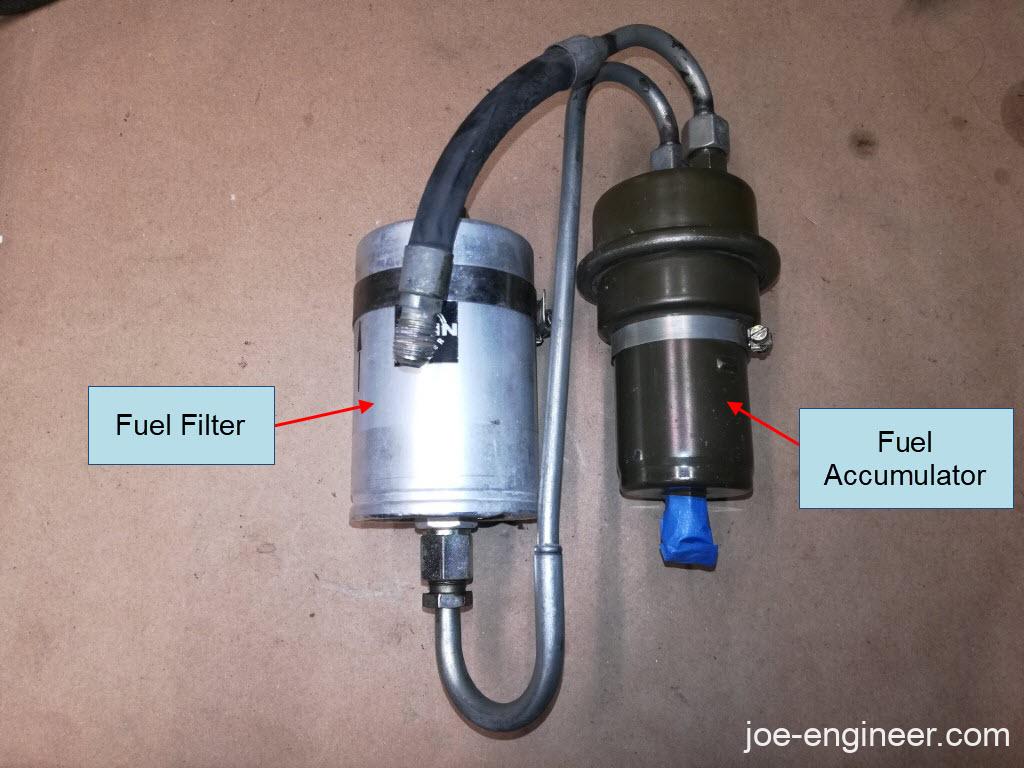
Fuel Injectors
CIS fuel injectors are simply spring-loaded mechanical assemblies so theoretically you should be able to clean them, test them, and if the spray pattern and pressure at which they open and flow fuel looks good and they don’t leak, then they can be re-used.
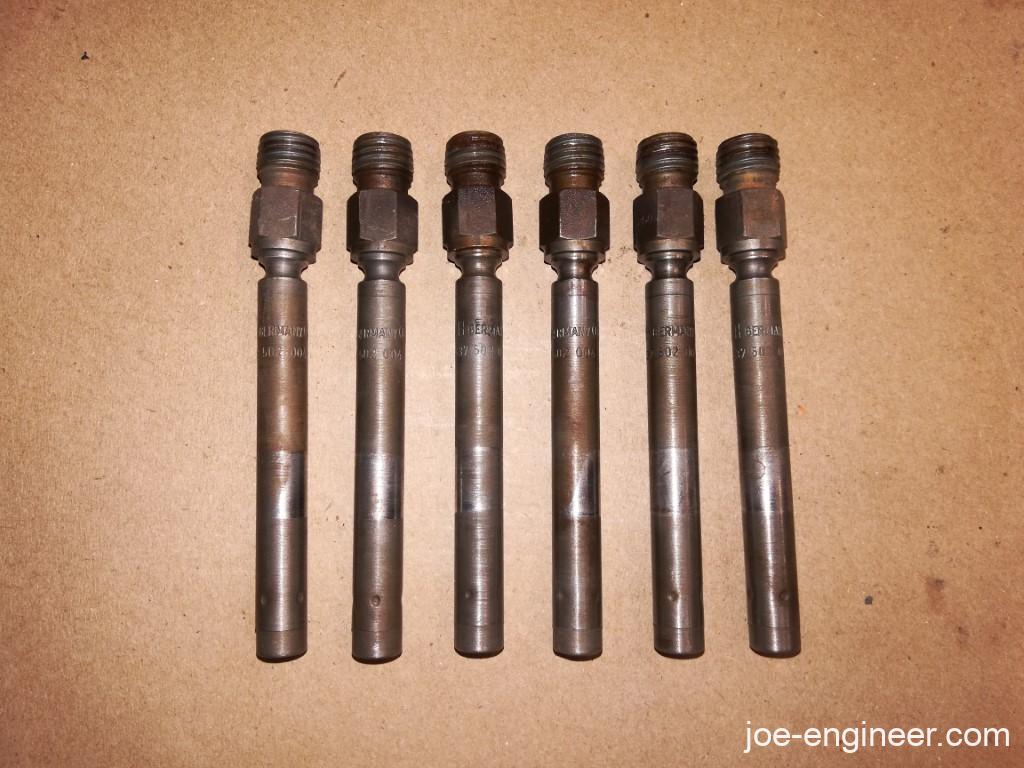
There are bench top injector testing devices that look like a little bottle jack with a fluid reservoir and a connection for the injector, so you can pump fluid through them and check the spray pattern and cracking pressure. They are similar to diesel injector testers. Since I don’t plan on testing old injectors on a regular basis, I found it more cost effective to just buy a brand new set and be done with it.
I have successfully used carb cleaner squirted into the back of the injector, compressed air, and a rubber-tipped blow gun to spray air into the back of the injector to see if it will spray. This works ok but just for a split second. Just long enough to see the spray pattern and hear the weird squeal/groan sound the injectors make when they open.
Fuel Pump and Check Valve
I did not test my fuel pump or the check valve attached to the pump outlet because they are one of the first things I replaced when I got the car, so they are essentially still new.
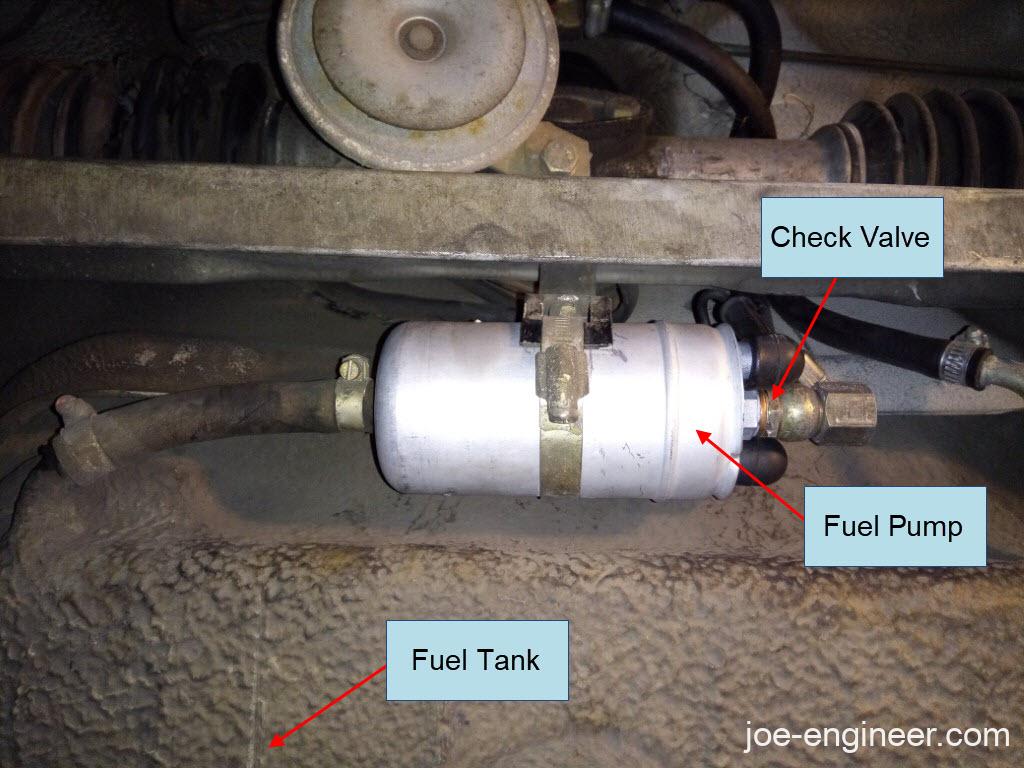
Lambda ECU and Oxygen Sensor
As you may have already guessed, the Lambda ECU reads the signal from the oxygen sensor in the exhaust path and adjusts the fuel mixture based on that reading. Except this ECU is very primitive and doesn’t control as much as a modern EFI unit would.
The Lambda ECU itself and the oxygen sensor will be tested once the engine is test run in the car, as those are components that are more easily diagnosed on a running engine. They are also easy to access if something goes wrong.
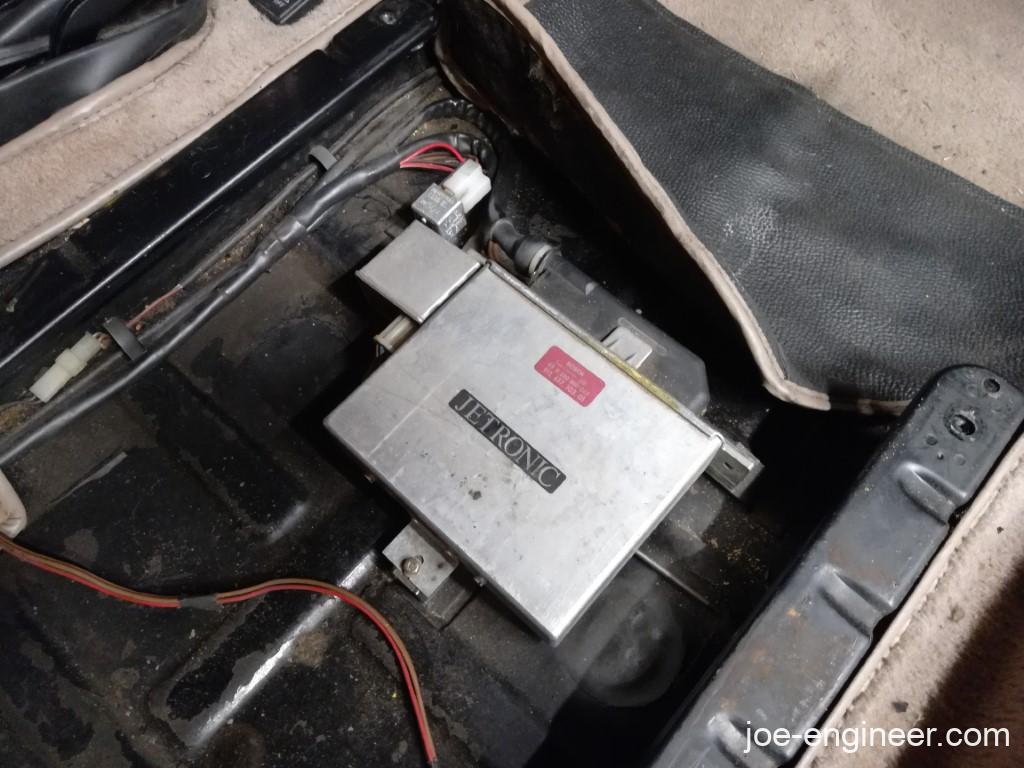
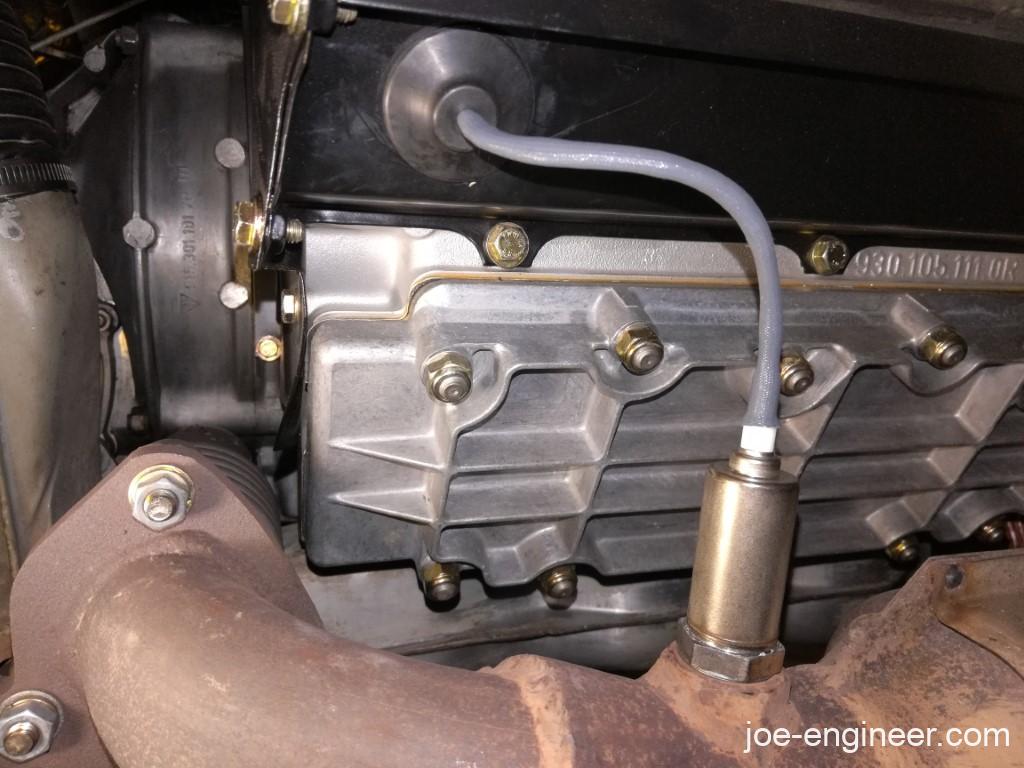
Subcomponent Testing
Here’s the actual testing covered in no particular order:
Auxiliary Air Regulator/Valve
This device allows extra air to bypass the throttle valve to raise idle speed on a cold engine. An electric heating element gradually closes the valve and cuts off the bypass air supply as the engine warms up.
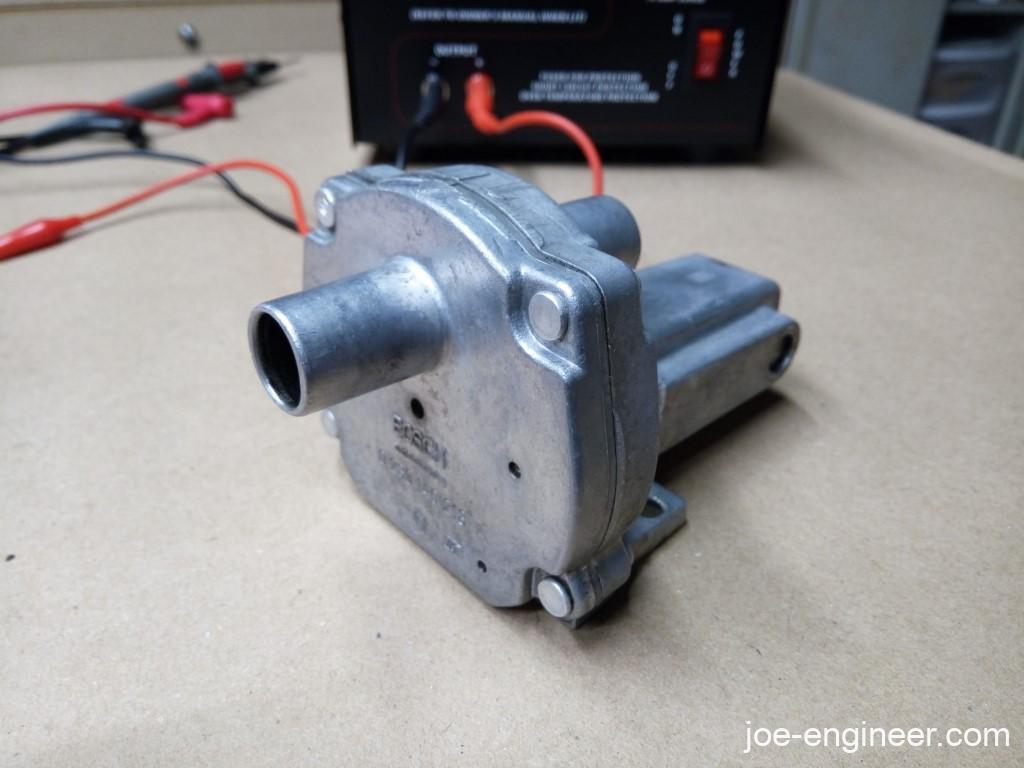
Here is the test spec taken from a Bosch K-Jet Workshop Manual:

Cold open position:

Apply 12 volts and start timing.
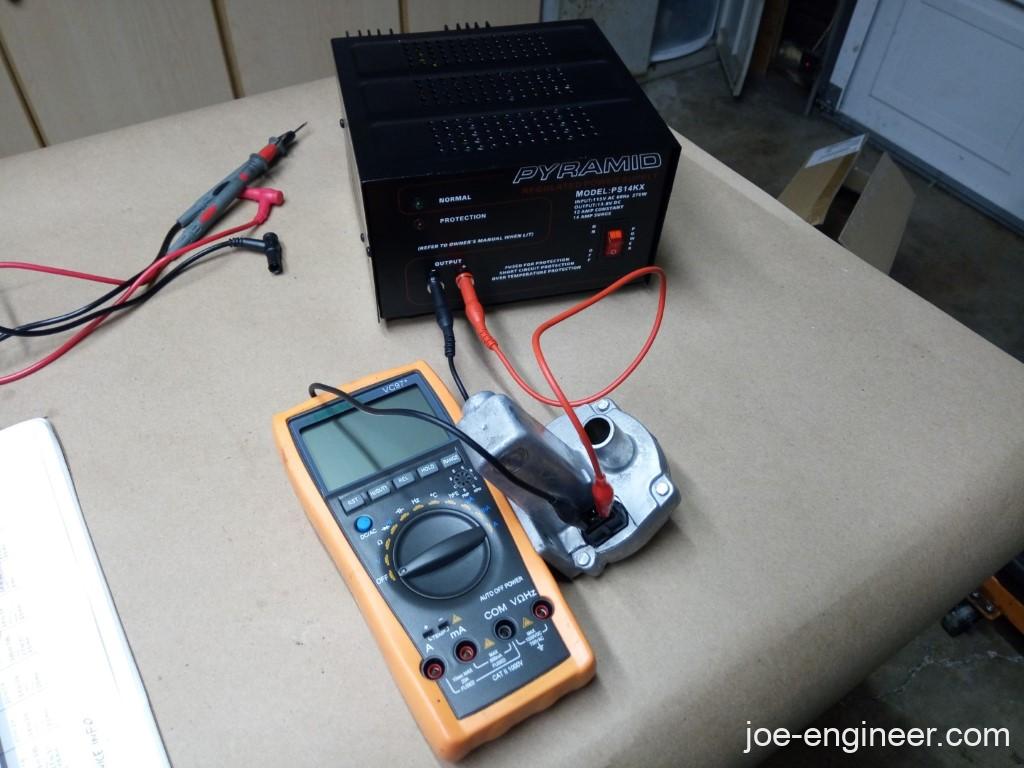
3:53 later fully closed:
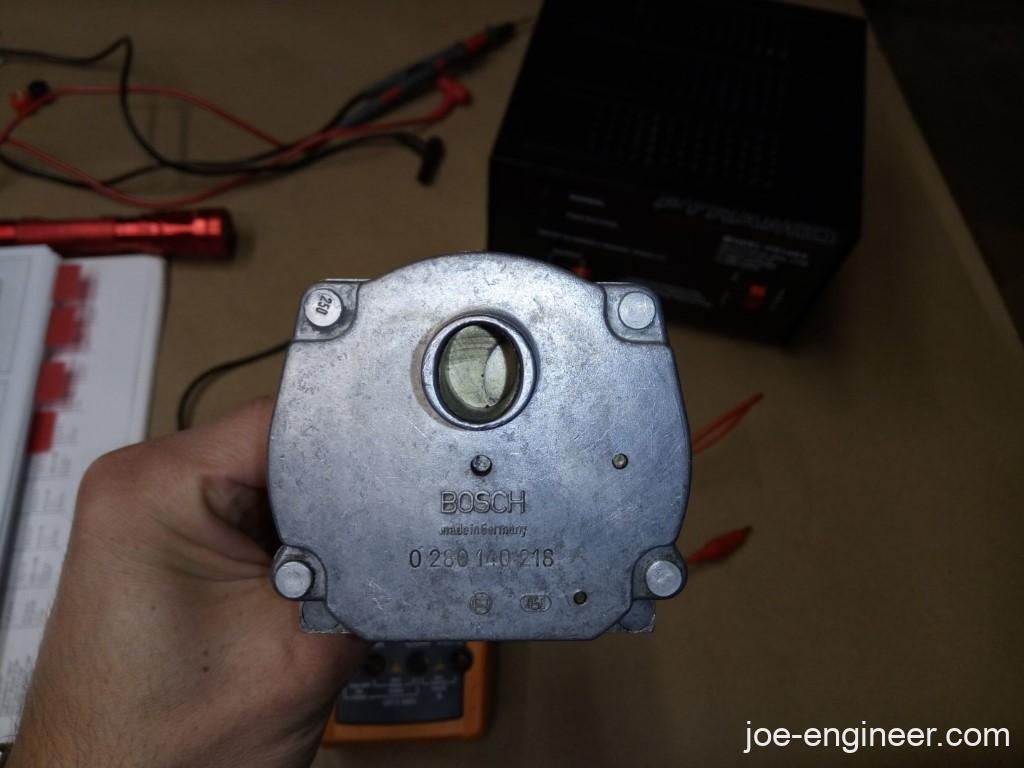
Still good.
Auxiliary Air Valve
Next was the Auxiliary Air Valve; no a different one. Who comes up with these names?
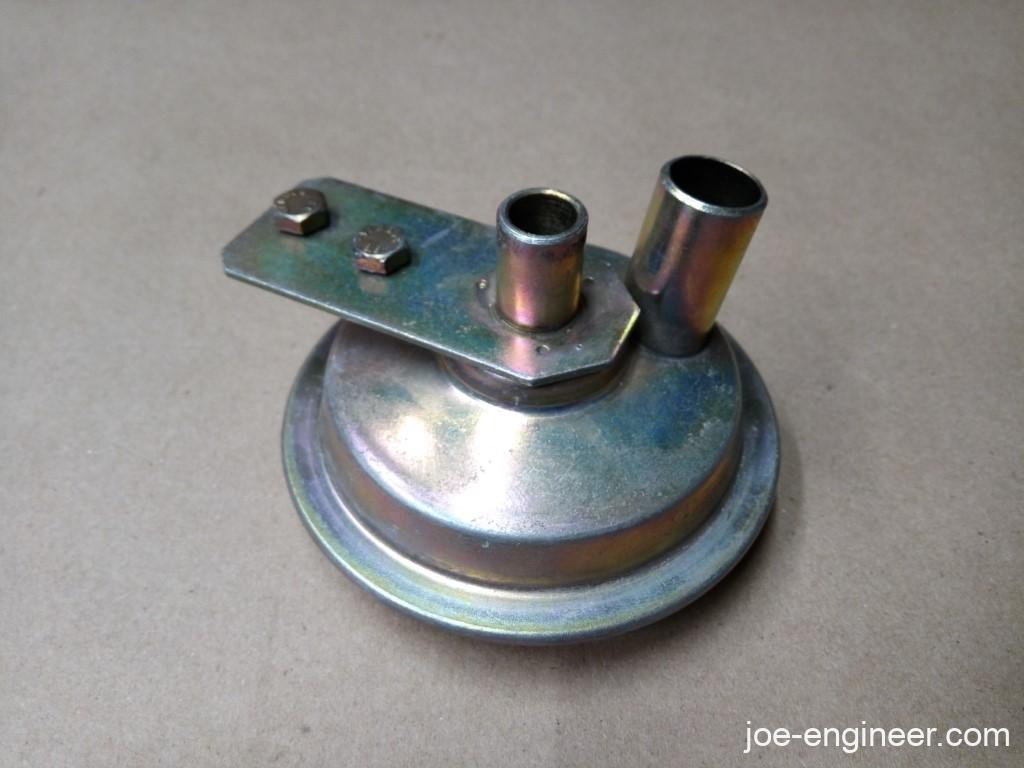
A description of its function per the Bentley Manual:

Bench testing it I found that if you leave the center port open and you try to pull a vacuum through the lower port, nothing happens. The diaphragm spring holds the pathway open. If you plug the center port and pull a vacuum on the lower port, it pulls about 20-22 inches of vacuum. If you then unplug the center port, the lower port still holds vacuum.
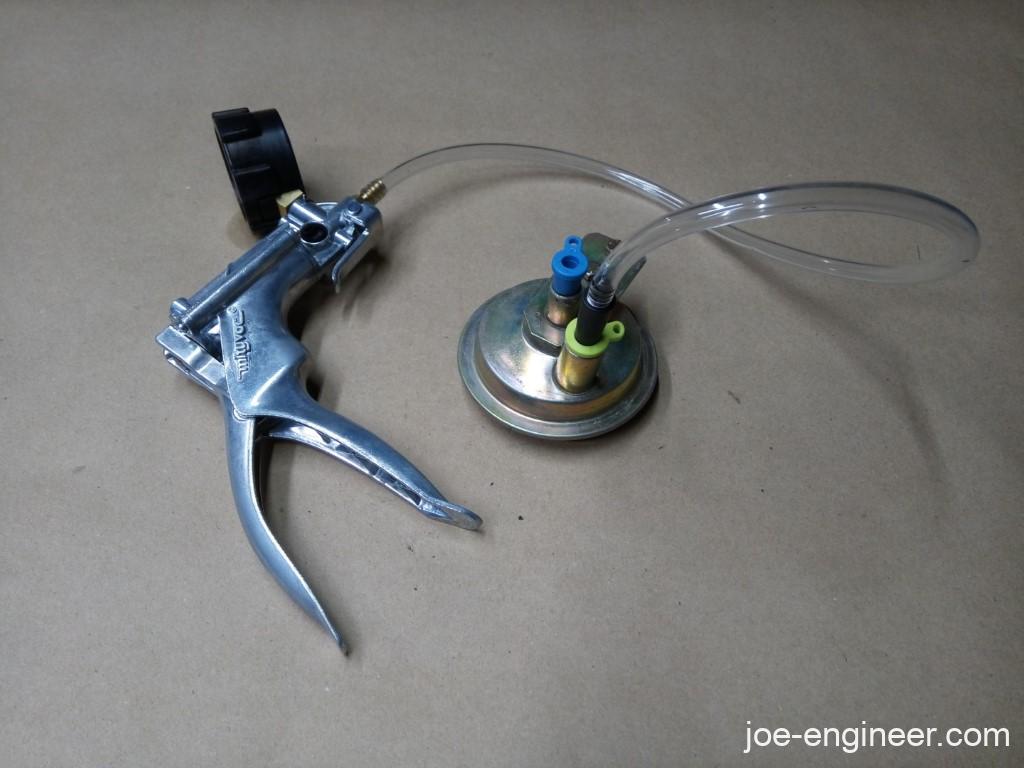
Still good. Here’s a video version of the test:
Decel Valve/Vacuum Limiter
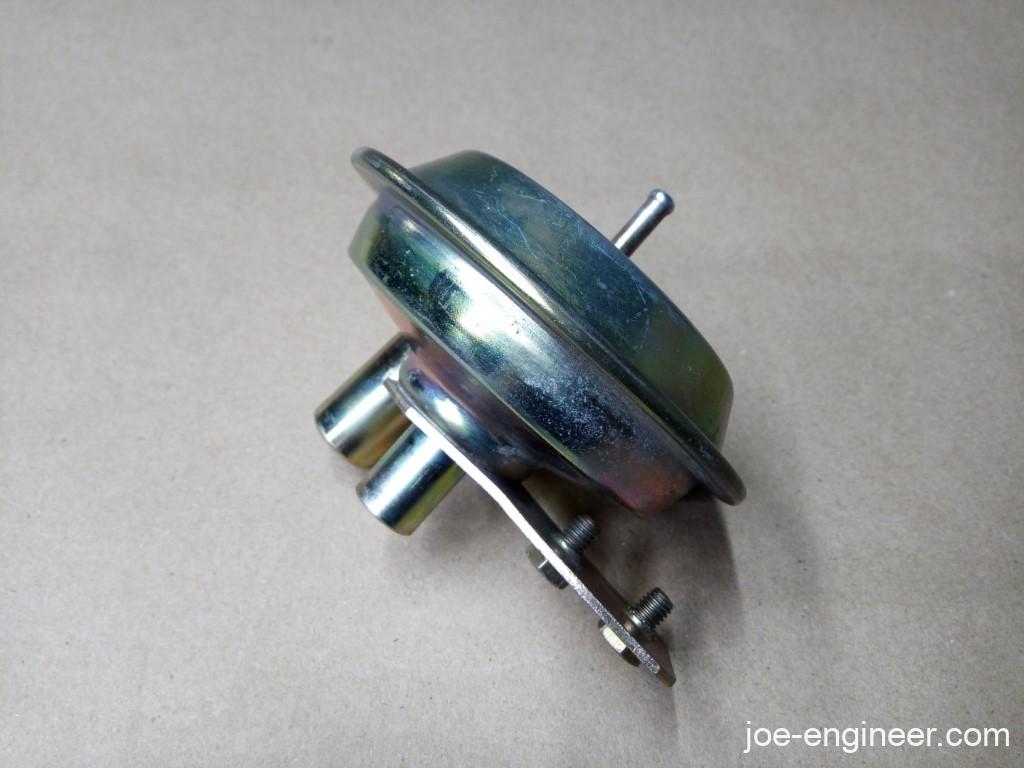
Description of its function per the Bentley Manual:
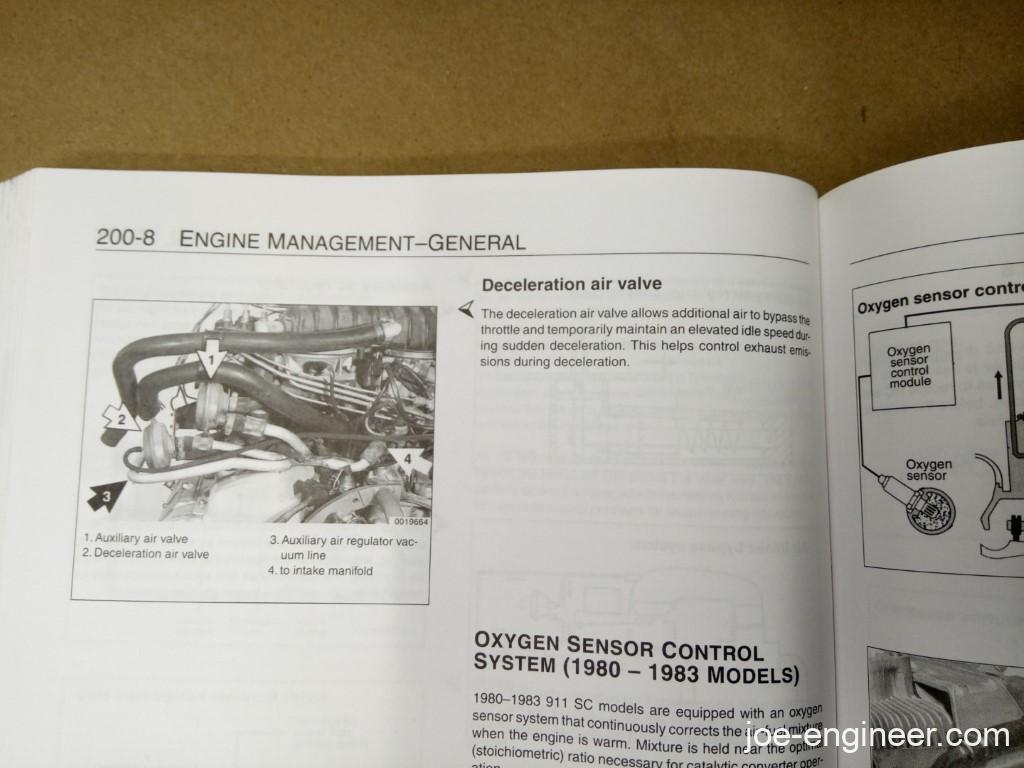
Per Jim’s CIS Primer the 2 big ports are closed until you pull 15-18″ of vacuum.
I blew into it with no vacuum and it was closed. Pulled 15″ of vacuum and still closed. Pulled about 20″ and it was open. Overshot the spec a bit but probably ok.
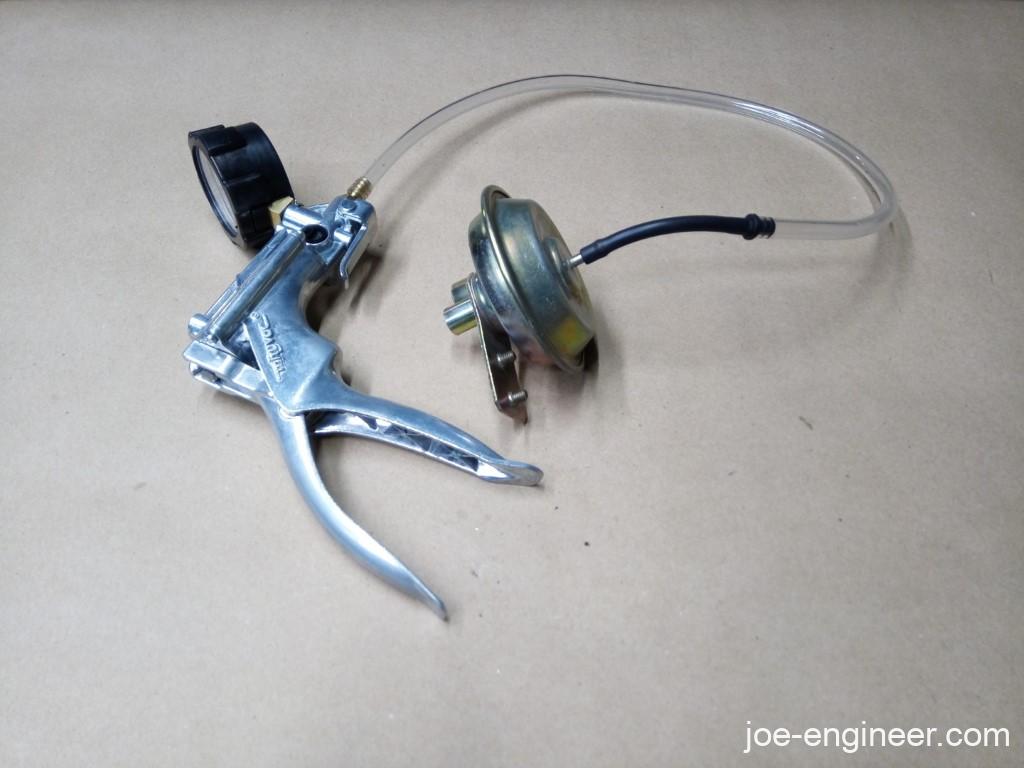
Still good. Here’s a video version of the test:
Frequency Valve
Next is the frequency valve. This is an electrically operated valve that bleeds off pressure in the lower chamber of the fuel distributor. The longer the valve stays open, the larger its duty cycle and the more fuel pressure is reduced, also reducing the fuel flowing through the injectors. It is essentially responsible for the “fine-tuning” of the fuel mixture in the Lambda-equipped cars.
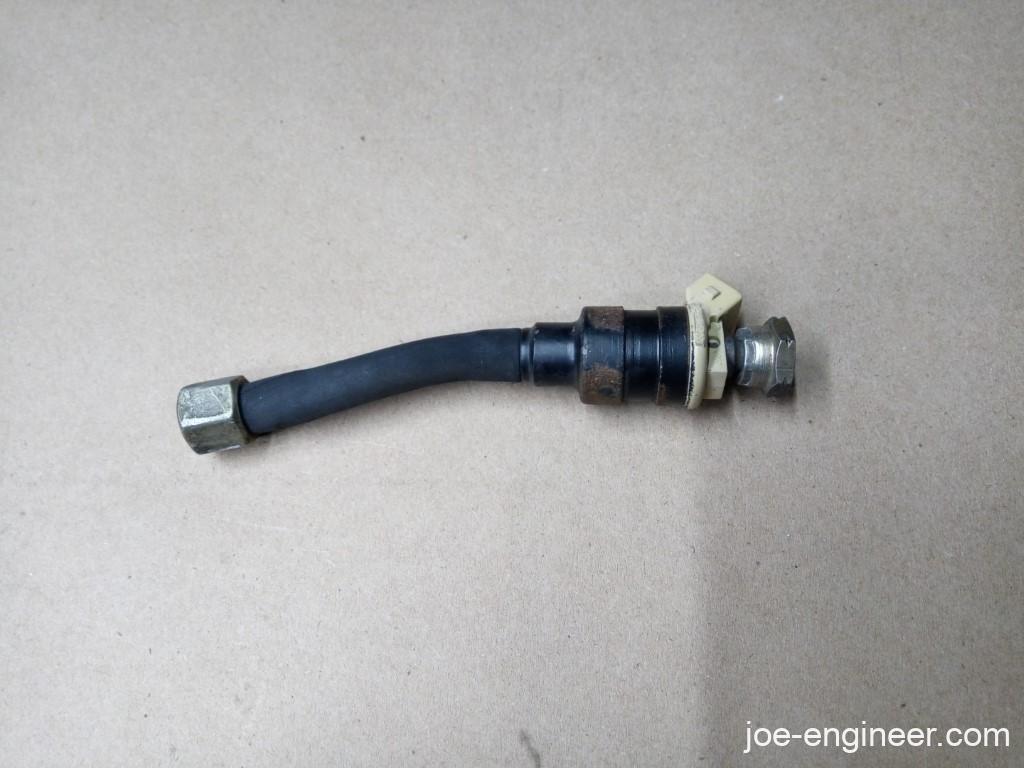
I admit there isn’t really an easy way to physically test this other than swapping the unit out on a known good running engine and Lambda ECU. Also, when it is operating properly you should be able to hear and feel it buzzing on a running engine if you put your hand on it. The only real criteria you can bench test is that across the two electrical contacts you should see a 2-3 ohms resistance, per the Workshop Manual.
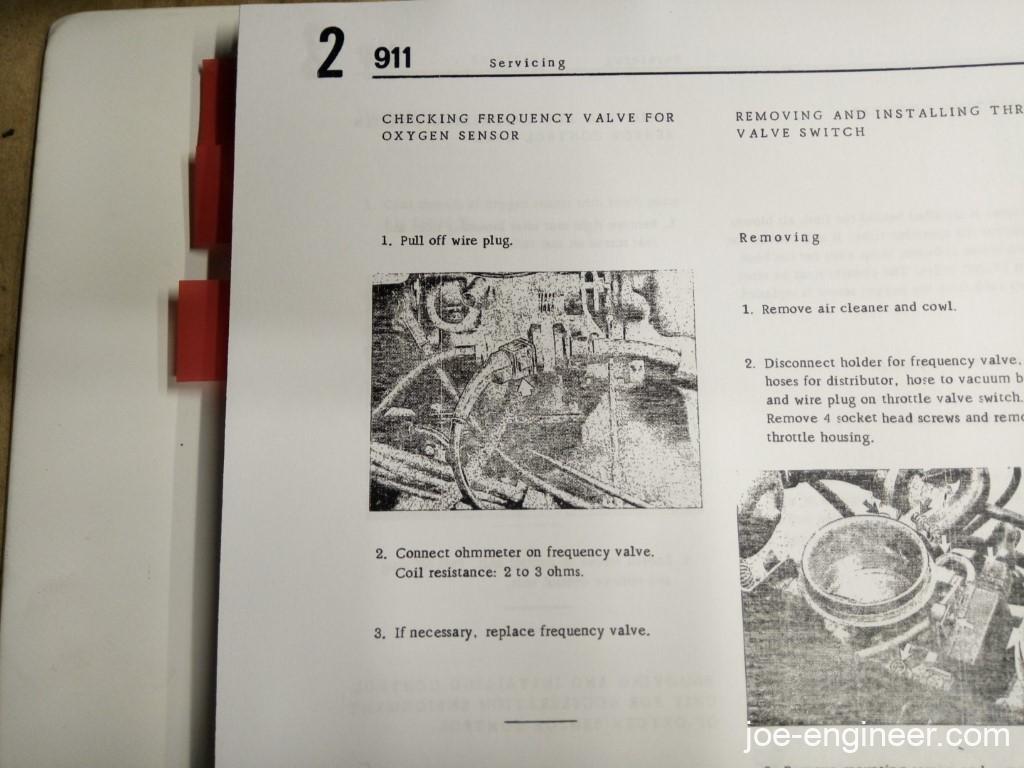
Which indeed it has. Fortunately, legend has it these units rarely fail, so it is likely that this one is still good, apart from needing the old rubber fuel line replaced.

Throttle Body Idle Contact Microswitch
Next I tested the throttle body microswitch. This switch notifies the Lambda circuit to provide momentary enrichment when the throttle opens past 15° on a cold engine.
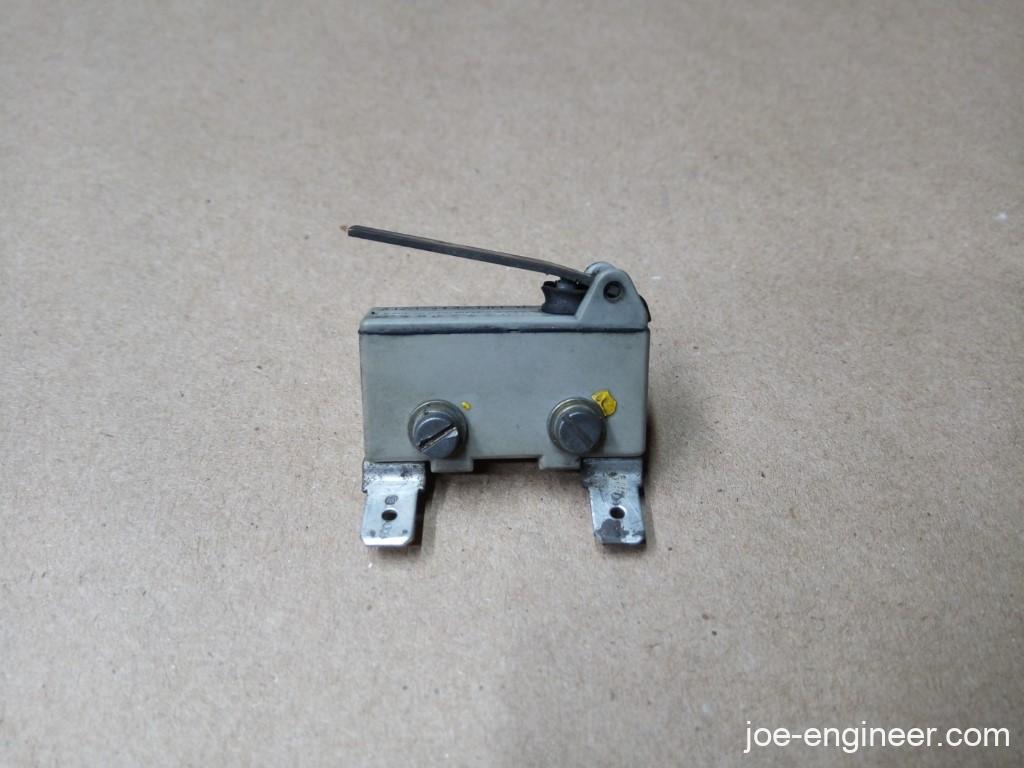
Test spec per the Workshop Manual is closed circuit with switch depressed and open circuit when released. It passed with no issue.
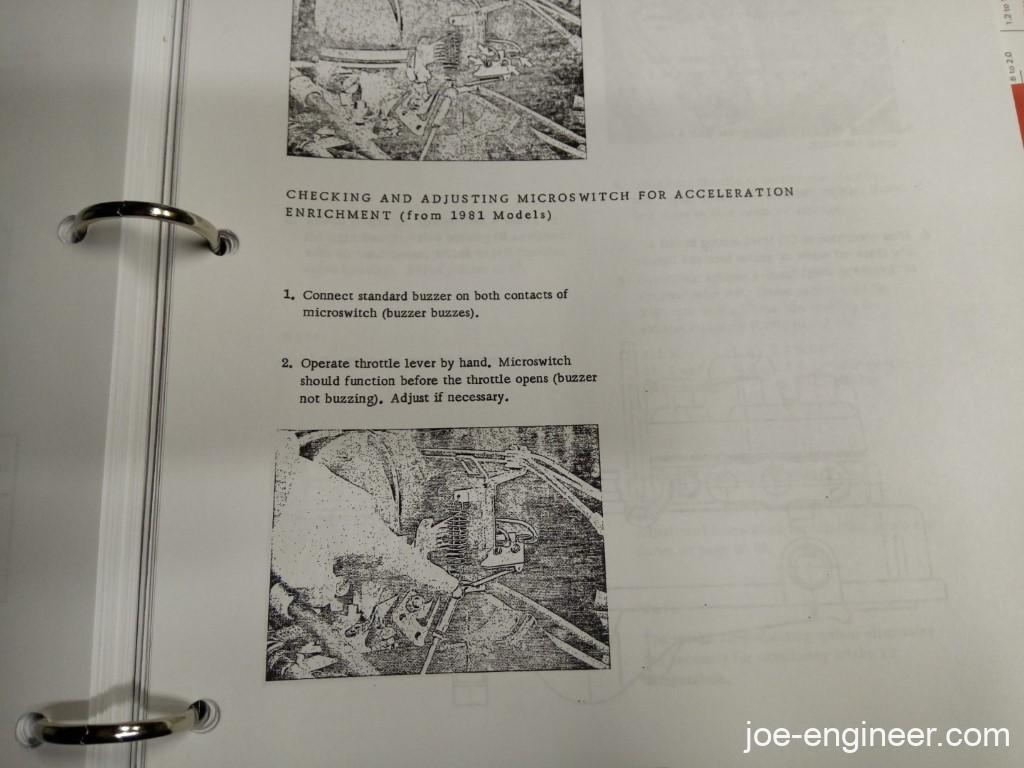
Video version of the test:
Throttle Rotary Switch
This is the switch attached to the side of the throttle body. It has a 3 pin connector with 2 sets of switch contacts to control fuel enrichment from idle to just off-idle and at full throttle.
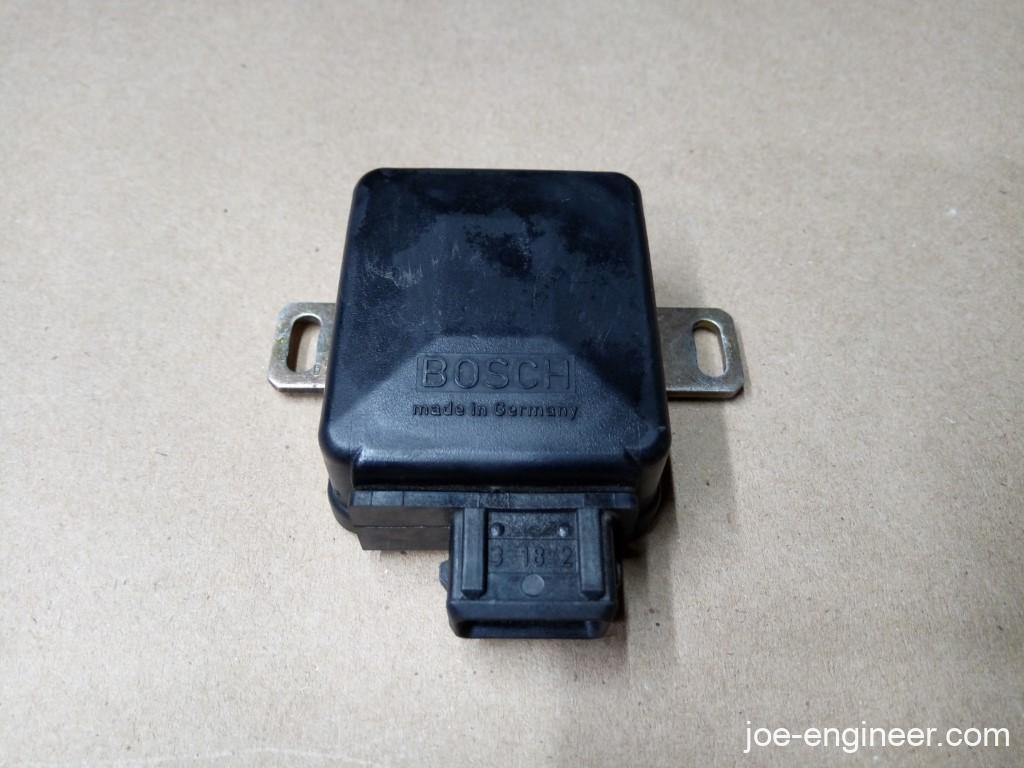
Test spec per the Workshop Manual is one set of contacts is closed at idle and opens at 2-3° of throttle valve rotation and another set of contacts closes at 30-35° of throttle valve rotation.
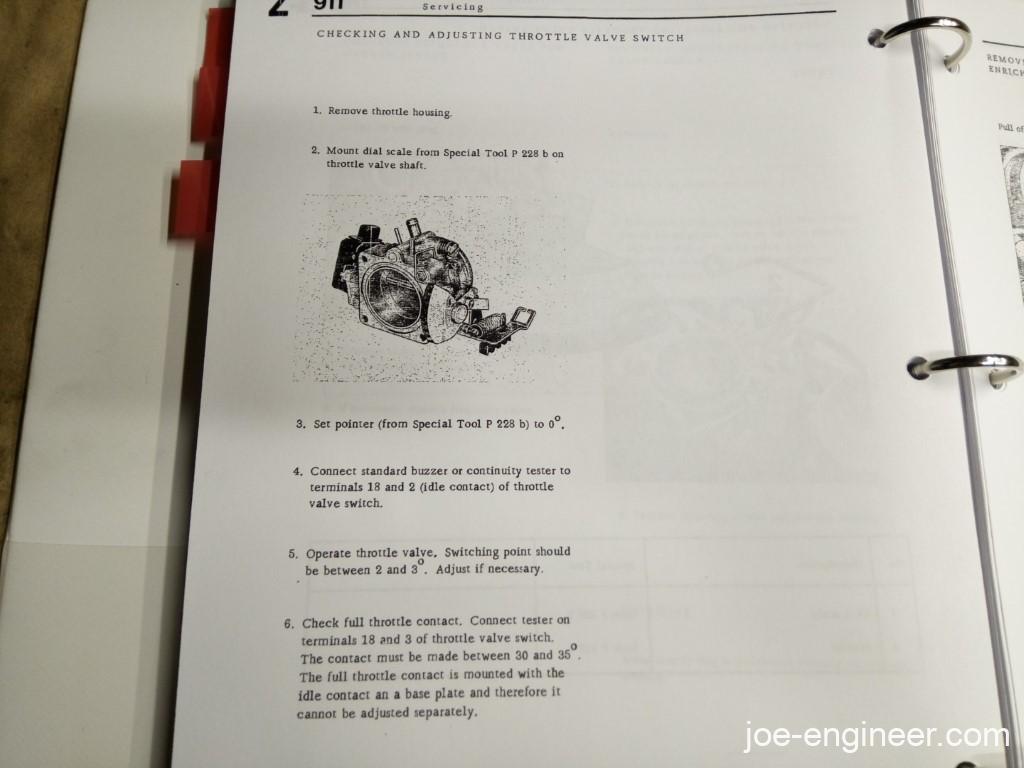
I mounted it to the throttle body and using the corresponding contacts, the switching points occur just after cracking the valve open and at about 1/3 throttle.
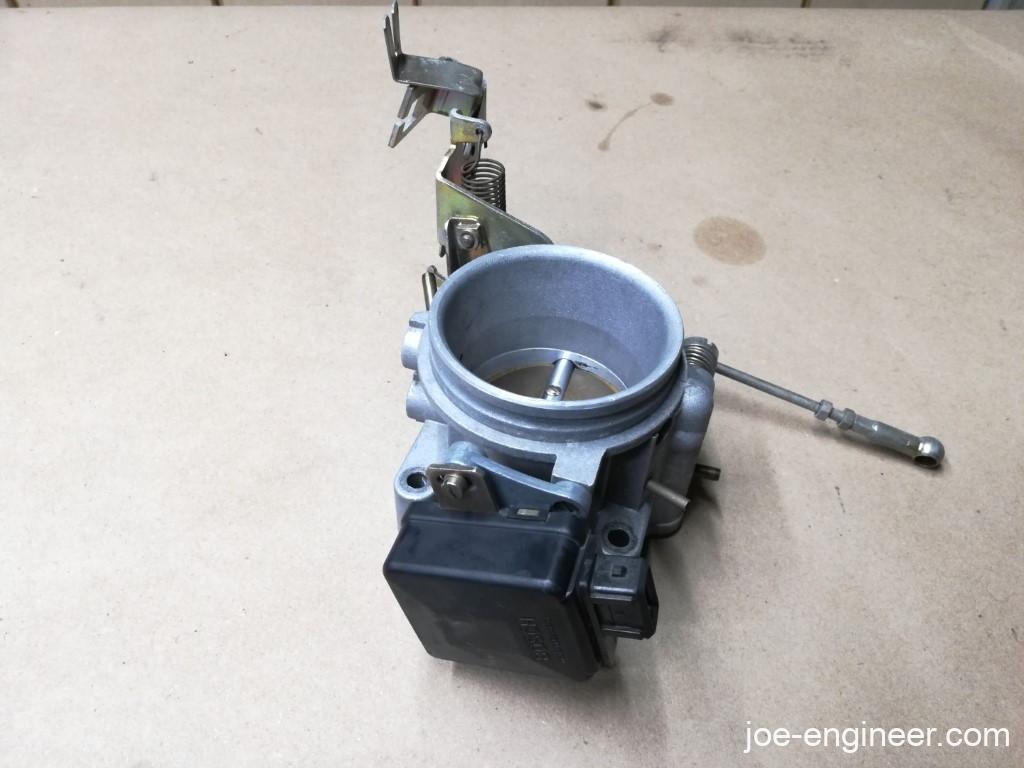
Thankfully still good. Here’s a video version of this test:
Cold Start Valve
This is the cold start injector attached to the front of the airbox (next to the firewall) that sprays extra fuel during cold engine start-ups.

Test spec, per the CIS Primer, is to verify it is a closed circuit. This one was a closed circuit and probably ok. I’m not going to bench test it to see if it sprays fuel, just run it on the car and see what happens. These are also supposed to be a low-failure rate item.
I have read that you can energize the coil with a 9 volt battery and check if the injector will open, but I have not tried this myself.
Here’s a video version of this test:
Engine Temperature Switches
On the 80-83 911SC with Lambda, there are 3 temperature switches on the engine that are an integral part of the CIS and must be tested.
Thermo-Time Switch (Left Chain Cover)
This switch lives in the left timing chain cover of 1974/5-1983 CIS cars. It allows the cold start valve to spray fuel at engine temperatures less than 113°F (45°C) and for a few seconds on an already warm engine. It has 2 terminals on it, one to heat the switch via an internal bimetallic strip and provide the switching function and another to complete/cut the ground to the cold start valve power circuit.
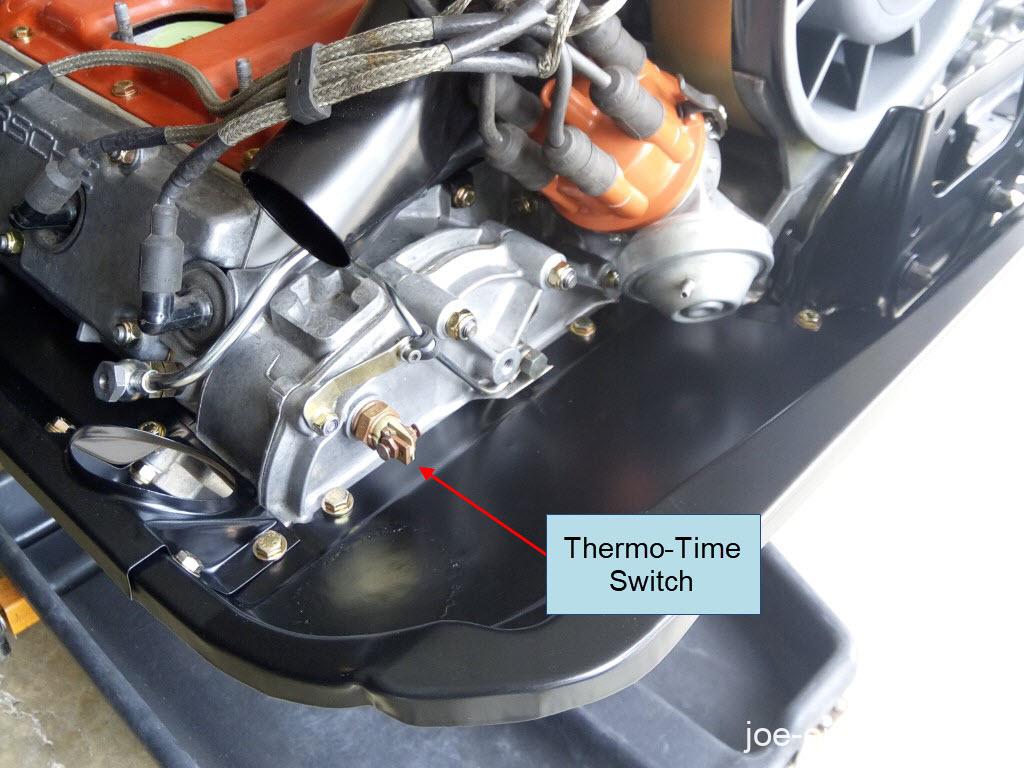
Per a Bosch K-Jet Workshop Manual, you can check the resistances between both terminals and between each terminal and ground below and above the switching temperatures. I checked them at room temperature and after heating with a heat gun to verify that the open circuit occurs.


Fortunately mine was still good, which was great news because a new Genuine Porsche one was about $230 as of the time of this writing!
If this switch is defective, either the cold start valve will never spray, causing hard cold starts, or will spray when it is not supposed to, causing a too rich mixture, flooding, and other running problems.
15°C Temp Switch (Right Chain Cover)
This switch lives in the right timing chain cover of 1980-1983 Lambda equipped CIS cars. It is the primary temperature input for the Lambda control unit.
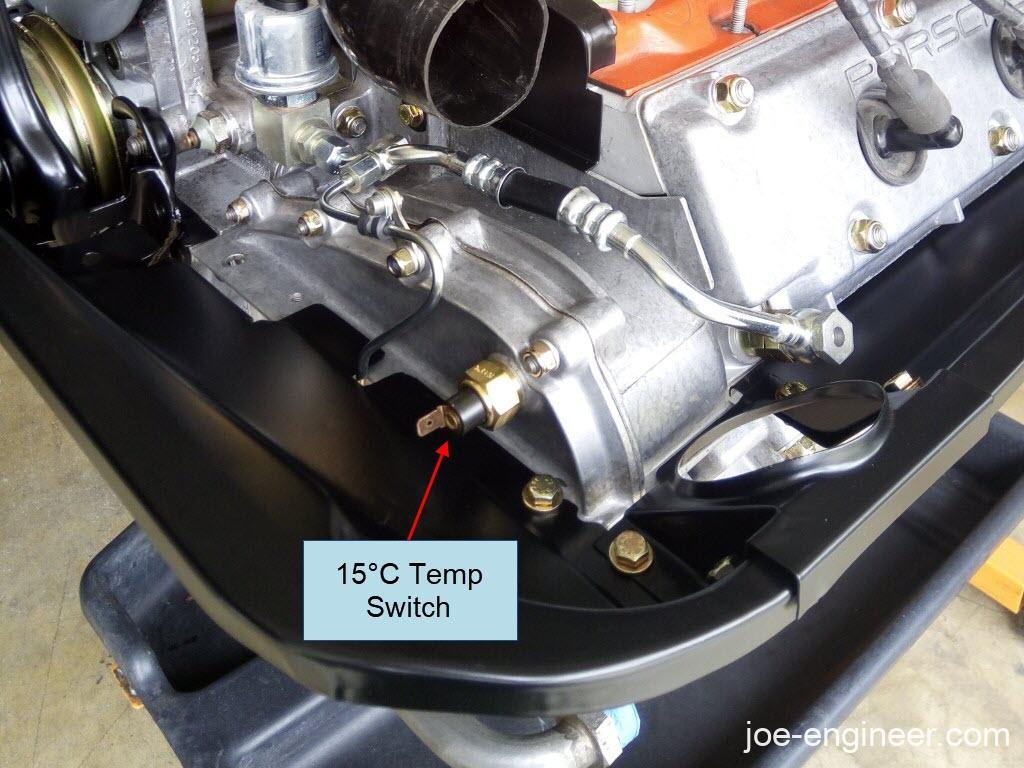
Per the Bentley Manual, it is normally open at temperatures below 15°C (59°F) and closed above that. To check it, I waited for a cool day with ambient temp below 59°F and verified that the switch was an open circuit between the terminal and the switch body. Then I took a heat gun and gently heated it until it was a closed circuit.
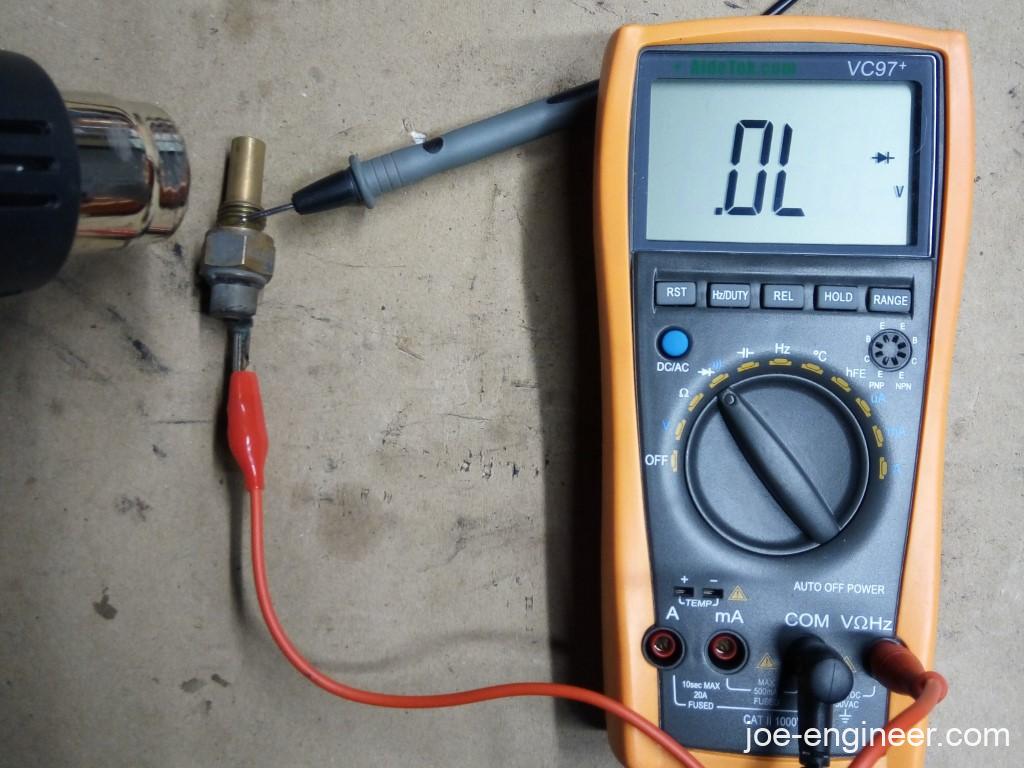
This method didn’t check the switching temperature, only that it switched when heated. If you really want to get exact you can get a thermostatically-controlled hot plate, set the temperature, heat some water to exactly 59°F, then dip the switch to heat it and see if it closes. Mine turned out to be bad. It always remained open and had a loose terminal. I replaced it with a new one.
Had I not tested this and simply re-installed it, the Lambda ECU would never receive this temp input or know to go into closed loop operation.
35°C Temp Switch (Oil Breather Tower)
This switch lives on the engine case oil breather tower sitting at the top and front of the engine case up against the firewall. It is only present on 1981-1983 Lambda equipped CIS cars. It allows additional fuel delivery at off-idle and part throttle on a cold engine when the oil temperature is below 35°C (95°F).

Per the Bentley Manual, the checking process is similar to the 15°C right chain cover switch. A continuity check between the switch terminal and the switch body below the switching temperature should result in a closed circuit, and above the switching temperature should result in an open circuit.
Fortunately mine was still ok and will be reused because they are no longer available new.
The US-spec 1983 911SC did not come with an EGR or a smog-pump with air injection manifold, so I will not cover those components here. All components that tested ok will be reassembled back on the engine. I finish with greater confidence that I will have successful CIS operation once the engine is running.
Final Thoughts
It is important to note that every one of these subcomponents has a unique and vital job to ensure smooth, trouble-free CIS operation. Few of these will disable the engine, but one or more of these components in defective condition will most certainly create some cold starting, hot starting, or poor running condition regardless of what climate the car is in. It is easy to see how a less-than-detail-oriented owner or mechanic could quickly become overwhelmed then erroneously conclude that CIS is simply never going to run correctly.
Modern EFI is amazing because nearly all the sensing, decision making, and switching tasks occur inside the electronic box instead of relying on a long chain of mechanical and electro-mechanical devices to replicate the same function. If you are working on a 80-83 Lambda-equipped 911SC you can see that this system was already heading in that direction with a very basic ECU that only controls the Lambda function.
I will take a small break from CIS coverage and cover some items on the car that need to be done before the engine can go back in:
- Finish cleaning and detailing the engine bay so it looks as fresh as the engine
- Refresh the brake system so I don’t crash
- Upgrade the front oil cooler and rebuild cooling system so I don’t overheat my new engine
- Replace the center tunnel fuel lines so I don’t catch on fire
- Rebuild the pedal assembly so there is no miscommunication between my feet and the car
References
Bentley Publishers – Porsche 911SC Service Manual 1978-1983
Robert Bosch – Porsche K-Jetronic Workshop Manual
DR. ING. h. c. F. Porsche KG – Porsche Workshop Manual 911 (1972-1983)
Jim Williams – CIS Primer
Notes
7/29/2020: Released.
10/21/2020: Added YouTube videos of tests.